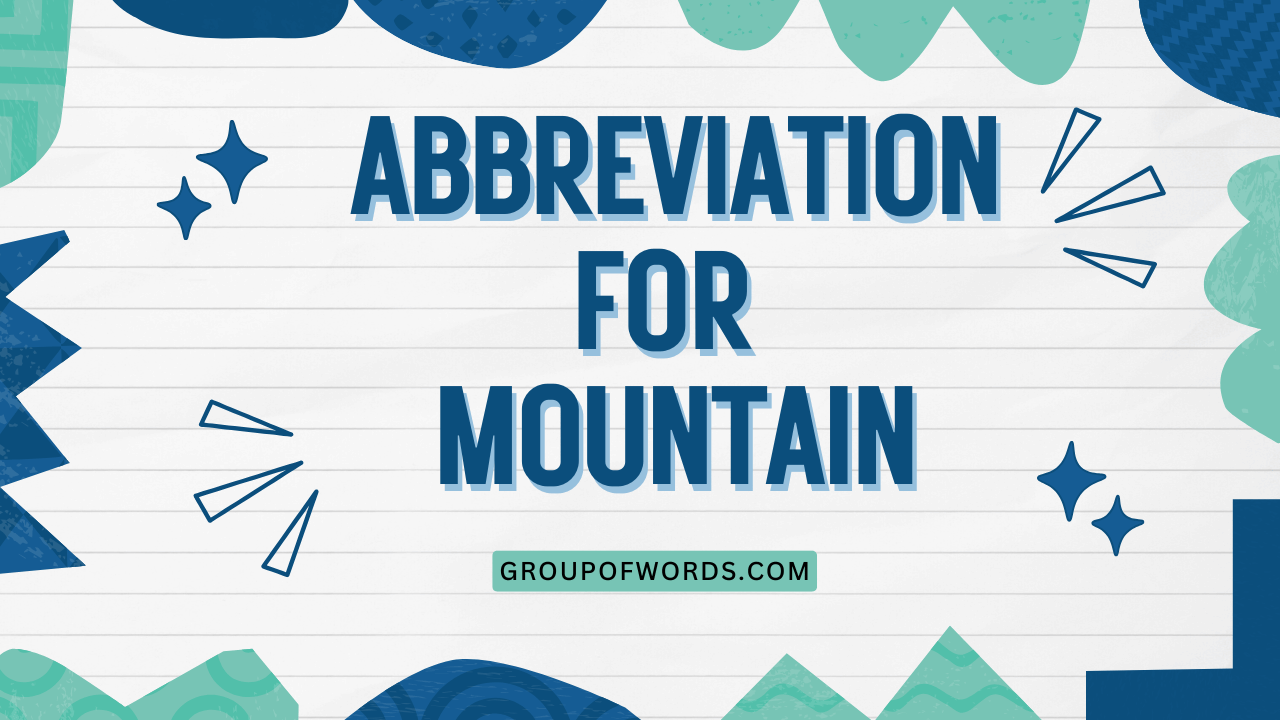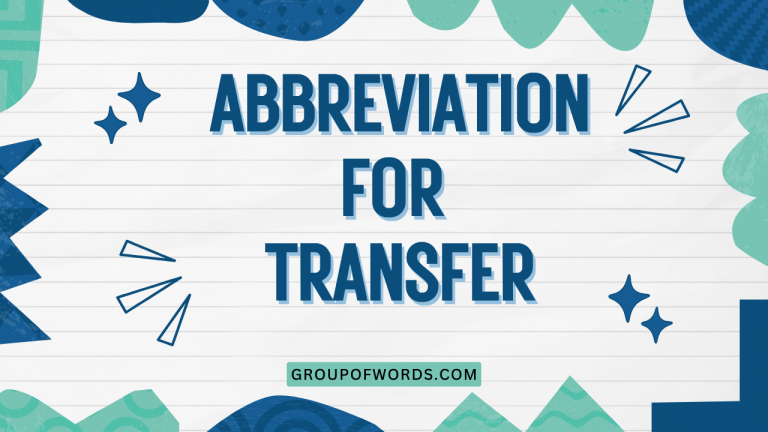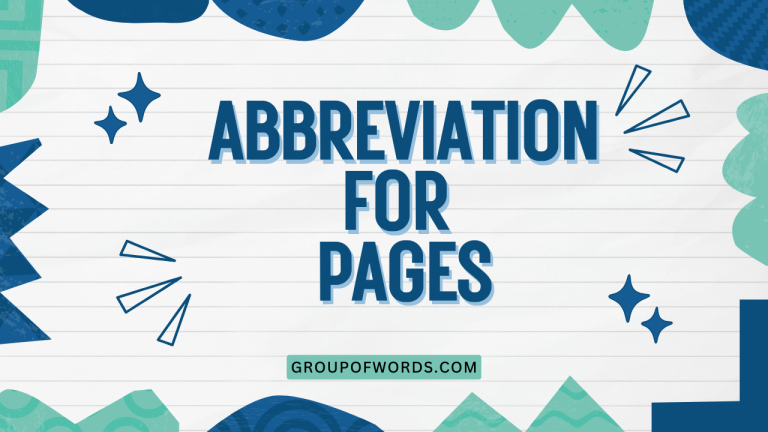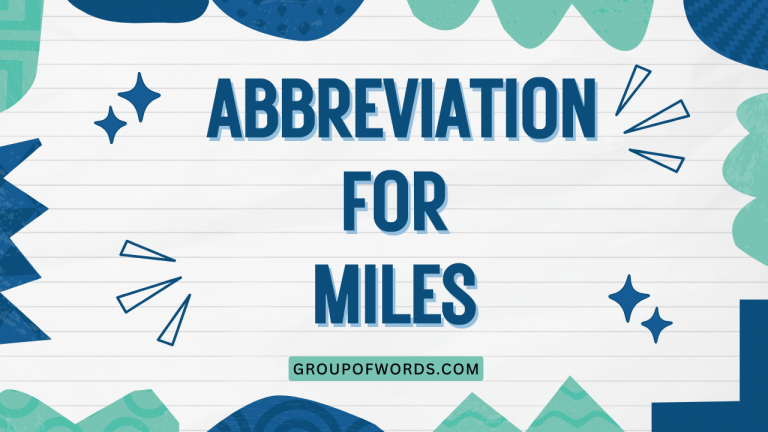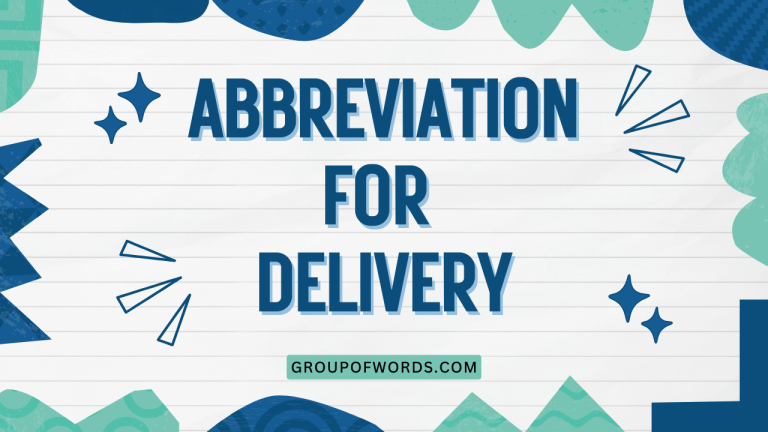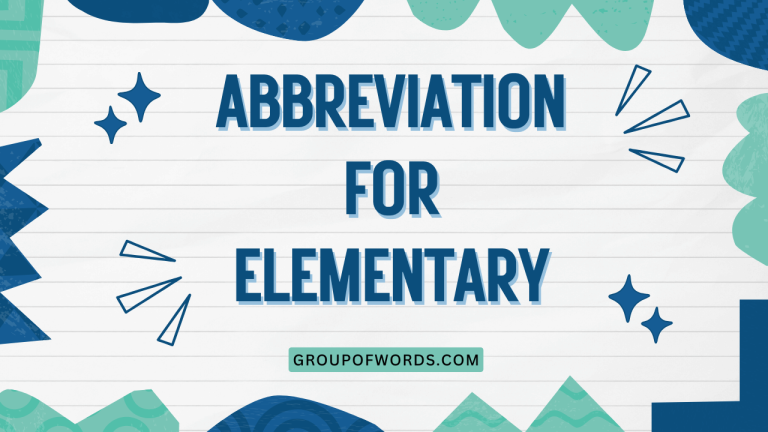Abbreviations for Mountain: A Comprehensive Guide
Understanding abbreviations is a crucial aspect of mastering the English language, especially when dealing with geographic terms. The abbreviation for “mountain,” commonly “Mt.” or “Mtn.,” appears frequently in maps, travel guides, and scientific literature.
Knowing when and how to use these abbreviations correctly enhances clarity and professionalism in writing. This article provides a detailed exploration of the abbreviations for “mountain,” covering their definitions, usage rules, common mistakes, and practical exercises to solidify your understanding.
Whether you’re a student, writer, or simply an avid reader, this guide will equip you with the knowledge to confidently navigate the world of abbreviations for “mountain.”
Table of Contents
- Introduction
- Definition of Mountain and Its Abbreviations
- Structural Breakdown of Abbreviations
- Types and Categories of Mountain Abbreviations
- Examples of Mountain Abbreviations in Use
- Usage Rules for Mountain Abbreviations
- Common Mistakes When Using Mountain Abbreviations
- Practice Exercises
- Advanced Topics: Regional Variations and Style Guides
- Frequently Asked Questions
- Conclusion
Definition of Mountain and Its Abbreviations
A mountain is a large natural elevation of the Earth’s surface rising abruptly from the surrounding level. It is generally higher and steeper than a hill. In geographical and geological contexts, the term “mountain” is used to describe landforms that typically reach a significant height and possess a distinct peak or summit. The word itself comes from the Old French word “montaigne,” ultimately derived from the Latin “montanus,” meaning “of or pertaining to a mountain.”
The primary abbreviations for “mountain” are Mt. and Mtn. These abbreviations are used to shorten the word, especially in contexts where space is limited or where brevity is preferred, such as in maps, lists, and tables. The abbreviation helps save space and improves readability in certain formats.
The abbreviation “Mt.” is generally the more widely accepted and frequently used form, particularly in formal writing and publications. “Mtn.” is also common, but tends to be used in more informal contexts or where an even shorter abbreviation is desired, such as in geographic databases or technical documentation.
Structural Breakdown of Abbreviations
Understanding the structural elements of abbreviations helps in recognizing and correctly using them. “Mt.” is derived from the first two letters of the word “mountain,” followed by a period.
The period indicates that the word has been abbreviated. Similarly, “Mtn.” is formed by taking the first three letters of the word, also followed by a period, indicating abbreviation.
The use of a period after the abbreviation is a key structural element. It signifies to the reader that the word has been shortened.
Without the period, the abbreviation might be misinterpreted or appear incomplete. The capitalization of the first letter is also crucial, as it maintains the proper noun status of the mountain’s name.
In some instances, particularly in informal settings, you might encounter the abbreviation without a period (e.g., “Mt” or “Mtn”). However, it’s generally recommended to include the period, especially in formal writing, to adhere to standard abbreviation conventions.
Omitting the period might be acceptable in specific contexts like social media or casual notes, but it’s best to maintain consistency with established grammatical rules in professional settings.
Types and Categories of Mountain Abbreviations
While the primary abbreviations are “Mt.” and “Mtn.,” it’s helpful to understand the nuanced differences and contexts in which each might be preferred.
Formal vs. Informal Usage
Mt. is commonly used in formal writing, academic publications, and official documents. Its widespread acceptance and clear indication of abbreviation make it suitable for professional contexts. For example, it is frequently found in scientific papers, geographical surveys, and encyclopedic entries.
Mtn. is more often found in informal settings, such as travel blogs, casual notes, or internal documentation. Its shorter form makes it convenient for quick references and situations where space is a primary constraint. However, it might be perceived as less formal and should be used judiciously in professional writing.
Geographic Databases and Technical Documentation
In geographic databases and technical documentation, “Mtn.” may be favored due to its conciseness and suitability for data entry fields with character limits. These environments often prioritize efficiency and brevity, making the shorter abbreviation a practical choice.
Regional Variations
Usage of “Mt.” and “Mtn.” can also vary regionally. While “Mt.” is generally accepted universally, “Mtn.” might be more prevalent in certain geographic areas or specific industries.
Being aware of these regional preferences can help you tailor your writing to the intended audience and context.
Examples of Mountain Abbreviations in Use
To illustrate the practical application of mountain abbreviations, here are several examples categorized for clarity.
Formal Usage Examples
The following table demonstrates the use of “Mt.” in formal contexts.
| Example Sentence | Explanation |
|---|---|
| The expedition successfully summited Mt. Everest. | “Mt.” is used in a formal context to denote the mountain’s name. |
| Mt. Kilimanjaro is a dormant volcano in Tanzania. | Formal usage in a geographical description. |
| The research team conducted studies on the flora of Mt. Rainier. | Academic context using the formal abbreviation. |
| According to the report, Mt. Fuji’s volcanic activity is being closely monitored. | Official report employing “Mt.” for clarity. |
| The climbers faced challenging conditions on Mt. McKinley. | Formal reference to a mountain climbing expedition. |
| Mt. Vesuvius is known for its historical eruption that buried Pompeii. | Historical and geographical context. |
| The trail leading to the peak of Mt. Mitchell is quite strenuous. | Describing a hiking trail in a formal manner. |
| Mt. Blanc, the highest peak in the Alps, attracts many tourists. | Geographical fact presented formally. |
| Studies show that the glaciers on Mt. Hood are receding. | Scientific study using the formal abbreviation. |
| The geological survey focused on the rock formations of Mt. St. Helens. | Geological research context. |
| The documentary highlighted the diverse ecosystems of Mt. Apo. | Documentary film reference. |
| Mt. Kenya is a popular destination for mountaineers. | General formal statement. |
| The weather station reported heavy snowfall on Mt. Logan. | Weather report context. |
| The conservation efforts are aimed at preserving the biodiversity of Mt. Kinabalu. | Conservation project description. |
| Mt. Elbrus is one of the Seven Summits. | Mountaineering context. |
| The aerial survey provided detailed images of Mt. Shasta. | Technical survey context. |
| Mt. Teide is a prominent feature of Tenerife’s landscape. | Geographical description. |
| The archaeological dig site was located near the base of Mt. Ararat. | Archaeological context. |
| Mt. Etna’s volcanic activity has shaped the surrounding landscape. | Geological process description. |
| The research paper analyzed the climate patterns on Mt. Washington. | Academic research context. |
| Mt. Kosciuszko is the highest mountain in Australia. | Geographical fact. |
| The observatory is situated on the summit of Mt. Palomar. | Astronomical context. |
| The national park encompasses the area around Mt. Olympus. | National park description. |
| Mt. Rainier National Park is a popular destination. | Tourist destination. |
| The eruption of Mt. Pinatubo had global effects. | Historical event. |
Informal Usage Examples
The following table illustrates the use of “Mtn.” in informal settings.
| Example Sentence | Explanation |
|---|---|
| We hiked up Mtn. Katahdin last summer. | Informal description of a hiking trip. |
| The view from Mtn. Mansfield was incredible. | Casual reference to a scenic view. |
| Planning a trip to Mtn. Washington next year. | Informal travel planning. |
| Saw some wildlife near Mtn. Marcy. | Casual observation during a hike. |
| Mtn. biking trails are great around here. | Informal discussion about outdoor activities. |
| Heard Mtn. Mitchell has amazing fall colors. | Casual recommendation. |
| Thinking of climbing Mtn. Hood this weekend. | Informal plan for a weekend activity. |
| Mtn. Rainier looks beautiful in the sunset. | Casual observation of natural scenery. |
| The cabin is located near Mtn. Charleston. | Informal description of a location. |
| Enjoyed a picnic at the base of Mtn. Timpanogos. | Casual account of an outdoor activity. |
| Mtn. biking is my favorite sport. | Personal preference. |
| Heard the trails on Mtn. Lemmon are tough. | Informal information sharing. |
| Mtn. Crested Butte has some great skiing. | Informal recommendation for skiing. |
| Drove past Mtn. Shasta on our road trip. | Casual travelogue. |
| The campsite was near Mtn. Baker. | Informal campsite location. |
| Saw a bear near Mtn. Katahdin. | Wildlife sighting. |
| Mtn. biking trails are great around here. | Outdoor activities discussion. |
| Planning to hike Mtn. Elbert next summer. | Informal hike planning. |
| The view from Mtn. Whitney is breathtaking. | Scenic view description. |
| Mtn. Teide is a great place to visit. | Travel recommendation. |
| Mtn. Fuji looks amazing in photos. | Casual aesthetic appreciation. |
| The resort is at the foot of Mtn. Mansfield. | Resort location. |
| Climbed Mtn. Kilimanjaro last year. | Personal achievement. |
| Mtn. Logan is on my bucket list. | Personal goal. |
| The lodge is near Mtn. Hood. | Lodge location. |
Examples in Geographic Contexts
The following table illustrates the use of both “Mt.” and “Mtn.” in geographical and mapping contexts.
| Example | Context |
|---|---|
| Mt. Everest on topographic maps. | Formal map labeling. |
| GPS coordinates for Mtn. McKinley. | Geographic database entry. |
| Signage pointing to Mt. Rainier National Park. | Park signage. |
| Mtn. Baker on hiking trail maps. | Trail map abbreviation. |
| Mt. Fuji in travel guides. | Travel literature. |
| Mtn. Katahdin in wilderness survival guides. | Survival guide context. |
| Mt. Mitchell on state park brochures. | Park brochures. |
| Mtn. Washington in weather reports. | Weather reporting. |
| Mt. Blanc on European travel maps. | European map labeling. |
| Mtn. Hood in Oregon tourism materials. | Tourism promotion. |
| Mt. St. Helens in geological surveys. | Geological survey context. |
| Mtn. Shasta on California road maps. | Road map labeling. |
| Mt. Apo in Philippine geography textbooks. | Educational textbook context. |
| Mtn. Kenya in African wildlife guides. | Wildlife guidebooks. |
| Mt. Logan in Canadian geographic databases. | Canadian database context. |
| Mtn. Kinabalu in Malaysian tourism brochures. | Tourism brochure. |
| Mt. Elbrus on Russian topographic maps. | Russian map labeling. |
| Mtn. Teide in Canary Islands travel guides. | Island travel guide. |
| Mt. Ararat on Turkish historical maps. | Historical map context. |
| Mtn. Vesuvius on Italian tourist maps. | Tourist map context. |
| Mt. Kosciuszko on Australian hiking maps. | Australian hiking maps. |
| Mtn. Palomar in astronomical atlases. | Astronomical context. |
| Mt. Olympus on Greek travel posters. | Travel poster. |
| Mtn. Pinatubo on Philippine hazard maps. | Hazard map context. |
| Mt. McKinley in Alaskan park guides. | Park guide context. |
Usage Rules for Mountain Abbreviations
Following usage rules ensures consistency and clarity in writing. Here are the key rules to consider when using “Mt.” and “Mtn.”
Capitalization
Always capitalize the first letter of the abbreviation, as it forms part of a proper noun. This rule applies to both “Mt.” and “Mtn.” For example, “Mt.
Everest” and “Mtn. McKinley” are correct.
Punctuation
Include a period after the abbreviation to indicate that the word has been shortened. This is a standard convention in English grammar.
For instance, “Mt.” and “Mtn.” are punctuated correctly.
Consistency
Maintain consistency in your choice of abbreviation within the same document or piece of writing. If you start with “Mt.,” stick with it throughout, unless there’s a specific reason to switch to “Mtn.,” such as character limits in a table or database field.
Formal vs. Informal Contexts
Use “Mt.” in formal writing, academic publications, and official documents. Reserve “Mtn.” for informal settings, such as personal notes, travel blogs, or internal communications.
Consider your audience and the overall tone of your writing when making this decision.
Clarity
Ensure that the abbreviation is clear and unambiguous. In rare cases where the context might not be immediately clear, consider spelling out the word “mountain” in full to avoid confusion.
Exceptions and Special Cases
In some cases, style guides or specific publications might have their own preferred abbreviations or formatting rules. Always consult the relevant style guide or publication guidelines to ensure compliance.
For example, some organizations might prefer spelling out “mountain” in full in certain contexts, even if abbreviations are generally accepted.
Common Mistakes When Using Mountain Abbreviations
Avoiding common mistakes can significantly improve the clarity and professionalism of your writing.
Omitting the Period
One of the most frequent errors is omitting the period after the abbreviation. This can make the abbreviation look incomplete and less formal.
Always include the period: “Mt.” not “Mt” and “Mtn.” not “Mtn”.
Incorrect Capitalization
Forgetting to capitalize the first letter is another common mistake. Since the abbreviation is part of a proper noun (the mountain’s name), it must be capitalized: “Mt.
Everest” not “mt. Everest”.
Inconsistent Usage
Switching between “Mt.” and “Mtn.” inconsistently within the same document can create confusion and look unprofessional. Choose one and stick with it, unless context dictates otherwise.
Using “Mtn.” in Formal Writing
Using the informal abbreviation “Mtn.” in formal writing can undermine the credibility of your work. Reserve “Mtn.” for informal contexts and use “Mt.” in professional settings.
Misunderstanding Context
Failing to consider the context can lead to inappropriate abbreviation usage. Always assess whether the abbreviation is suitable for the intended audience and the overall tone of the writing.
Here are examples of common mistakes and their corrections:
| Incorrect | Correct | Explanation |
|---|---|---|
| mt Everest | Mt. Everest | Capitalization and period missing. |
| Mtn.Everest | Mt. Everest | Formal context requires “Mt.”. |
| Mt Rainier and then Mtn. Adams | Mt. Rainier and then Mt. Adams | Inconsistent usage. |
| Mt. everest | Mt. Everest | Proper capitalization needed for mountain names. |
| Mtn McKinley | Mtn. McKinley | Missing period. |
Practice Exercises
These exercises will help you practice using mountain abbreviations correctly. Each exercise is designed to test your understanding of the rules and guidelines discussed in this article.
Exercise 1: Correct the Abbreviations
Correct the following sentences by adding or correcting the mountain abbreviations.
| Question | Answer |
|---|---|
| 1. We climbed mt. fuji last year. | 1. We climbed Mt. Fuji last year. |
| 2. The view from mtn rainier was amazing. | 2. The view from Mt. Rainier was amazing. |
| 3. He is planning a trip to mt. everest. | 3. He is planning a trip to Mt. Everest. |
| 4. They hiked up mtn. Katahdin. | 4. They hiked up Mt. Katahdin. |
| 5. The research was conducted on mt st helens. | 5. The research was conducted on Mt. St. Helens. |
| 6. Mtn Blanc is the highest peak in Europe. | 6. Mt. Blanc is the highest peak in Europe. |
| 7. The trail leads to mt. washington. | 7. The trail leads to Mt. Washington. |
| 8. We saw a bear near mtn. Mckinley. | 8. We saw a bear near Mt. McKinley. |
| 9. The weather on mt. logan is unpredictable. | 9. The weather on Mt. Logan is unpredictable. |
| 10. The park surrounds mtn Olympus. | 10. The park surrounds Mt. Olympus. |
Exercise 2: Choose the Correct Abbreviation
Choose the correct abbreviation (“Mt.” or “Mtn.”) for the following sentences, considering the context.
| Question | Answer |
|---|---|
| 1. The scientific paper discussed the geology of (Mt./Mtn.) Kilimanjaro. | 1. The scientific paper discussed the geology of Mt. Kilimanjaro. |
| 2. We went skiing on (Mt./Mtn.) Hood last winter. | 2. We went skiing on Mt. Hood last winter. |
| 3. GPS coordinates for (Mt./Mtn.) Everest are available online. | 3. GPS coordinates for Mt. Everest are available online. |
| 4. Planning a weekend trip to (Mt./Mtn.) Marcy. | 4. Planning a weekend trip to Mtn. Marcy. |
| 5. The documentary featured (Mt./Mtn.) Fuji. | 5. The documentary featured Mt. Fuji. |
| 6. Saw some deer near (Mt./Mtn.) Mitchell. | 6. Saw some deer near Mtn. Mitchell. |
| 7. The research team studied the ecosystem of (Mt./Mtn.) Rainier. | 7. The research team studied the ecosystem of Mt. Rainier. |
| 8. Climbed (Mt./Mtn.) Elbrus last summer. | 8. Climbed Mt. Elbrus last summer. |
| 9. The weather station is located on (Mt./Mtn.) Washington. | 9. The weather station is located on Mt. Washington. |
| 10. The map shows the location of (Mt./Mtn.) Vesuvius. | 10. The map shows the location of Mt. Vesuvius. |
Exercise 3: Rewrite the Sentences
Rewrite the following sentences using the appropriate abbreviation for “mountain.”
| Question | Answer |
|---|---|
| 1. The highest peak in North America is mountain McKinley. | 1. The highest peak in North America is Mt. McKinley. |
| 2. The trail to mountain Katahdin is challenging. | 2. The trail to Mt. Katahdin is challenging. |
| 3. We visited mountain Rainier National Park last year. | 3. We visited Mt. Rainier National Park last year. |
| 4. The view from mountain Washington is breathtaking. | 4. The view from Mt. Washington is breathtaking. |
| 5. They are studying the volcanic activity of mountain St. Helens. | 5. They are studying the volcanic activity of Mt. St. Helens. |
| 6. Mountain Fuji is a popular tourist destination. | 6. Mt. Fuji is a popular tourist destination. |
| 7. We plan to hike mountain Everest next spring. | 7. We plan to hike Mt. Everest next spring. |
| 8. The research focused on mountain Blanc. | 8. The research focused on Mt. Blanc. |
| 9. The cabin is located near mountain Mitchell. | 9. The cabin is located near Mt. Mitchell. |
| 10. The expedition reached the summit of mountain Logan. | 10. The expedition reached the summit of Mt. Logan. |
Advanced Topics: Regional Variations and Style Guides
For advanced learners, understanding regional variations and adhering to specific style guides is crucial for nuanced and professional writing.
Regional Variations in Abbreviation Usage
While “Mt.” is generally accepted and widely used, some regions may have preferences for “Mtn.” or even spell out “mountain” in full more frequently. For example, in certain parts of the United States, particularly in informal contexts, “Mtn.” might be more common.
Conversely, in formal European publications, spelling out “mountain” might be preferred to maintain a more traditional and formal tone.
Style Guide Preferences
Different style guides, such as the Associated Press (AP) style, the Chicago Manual of Style, and the Modern Language Association (MLA) style, may have specific recommendations for abbreviating “mountain.” Some style guides might prefer spelling out “mountain” in full in certain contexts, while others might allow or even encourage the use of “Mt.” or “Mtn.” It’s essential to consult the relevant style guide for your specific writing context to ensure compliance and consistency.
International Usage
In non-English speaking countries, the abbreviation for “mountain” may vary depending on the local language. For example, in French, “Mont” is commonly used, while in Spanish, “Monte” is typical.
When writing for an international audience, it’s important to be aware of these linguistic differences and adapt your usage accordingly.
Frequently Asked Questions
Here are some frequently asked questions about the abbreviation for “mountain.”
- Is it always necessary to abbreviate “mountain”?
No, it’s not always necessary. In some cases, especially in formal writing, spelling out “mountain” in full might be preferred for clarity and emphasis. The choice depends on the context, audience, and overall tone of the writing. - Which abbreviation is more formal, “Mt.” or “Mtn.”?
“Mt.” is generally considered more formal and is widely accepted in academic, professional, and official contexts. “Mtn.” is more often used in informal settings. - Should I always include a period after the abbreviation?
Yes, it’s generally recommended to include a period after the abbreviation (“Mt.” or “Mtn.”) to indicate that the word has been shortened. This is a standard convention in English grammar. - Can I use “Mtn” without a period in informal writing?
While omitting the period might be acceptable in very informal settings like social media or quick notes, it’s generally best to include the period for clarity and consistency, even in informal contexts. - How do I maintain consistency when using abbreviations?
Choose one abbreviation (“Mt.” or “Mtn.”) and stick with it throughout your document or piece of writing, unless there’s a specific reason to switch, such as character limits in a table or database field. - What if a style guide has specific rules for abbreviating “mountain”?
Always consult the relevant style guide for your specific writing context and follow its recommendations for abbreviating “mountain.” Different style guides may have different preferences. - Are there regional variations in the usage of “Mt.” and “Mtn.”?
Yes, while “Mt.” is generally accepted universally, “Mtn.” might be more prevalent in certain geographic areas or specific industries. Be aware of these regional preferences when writing for a particular audience. - Is it acceptable to spell out “mountain” completely in formal documents?
Yes, especially when the context requires emphasis or when the style guide recommends it. Spelling out “mountain” can enhance clarity and formality in certain situations.
Conclusion
Mastering the abbreviations for “mountain” – “Mt.” and “Mtn.” – is an essential skill for clear and effective communication. Understanding the nuances of formal versus informal usage, the importance of capitalization and punctuation, and the potential for regional variations will enhance your writing and ensure professionalism.
By following the guidelines and practicing with the exercises provided in this article, you can confidently and accurately use these abbreviations in various contexts.
Remember to always consider your audience, the context of your writing, and any relevant style guides when deciding whether to abbreviate “mountain” and which abbreviation to use. With consistent practice and attention to detail, you’ll be well-equipped to navigate the world of abbreviations and communicate effectively about geographical locations and features.
Keep practicing, and you’ll soon find that using these abbreviations becomes second nature!
